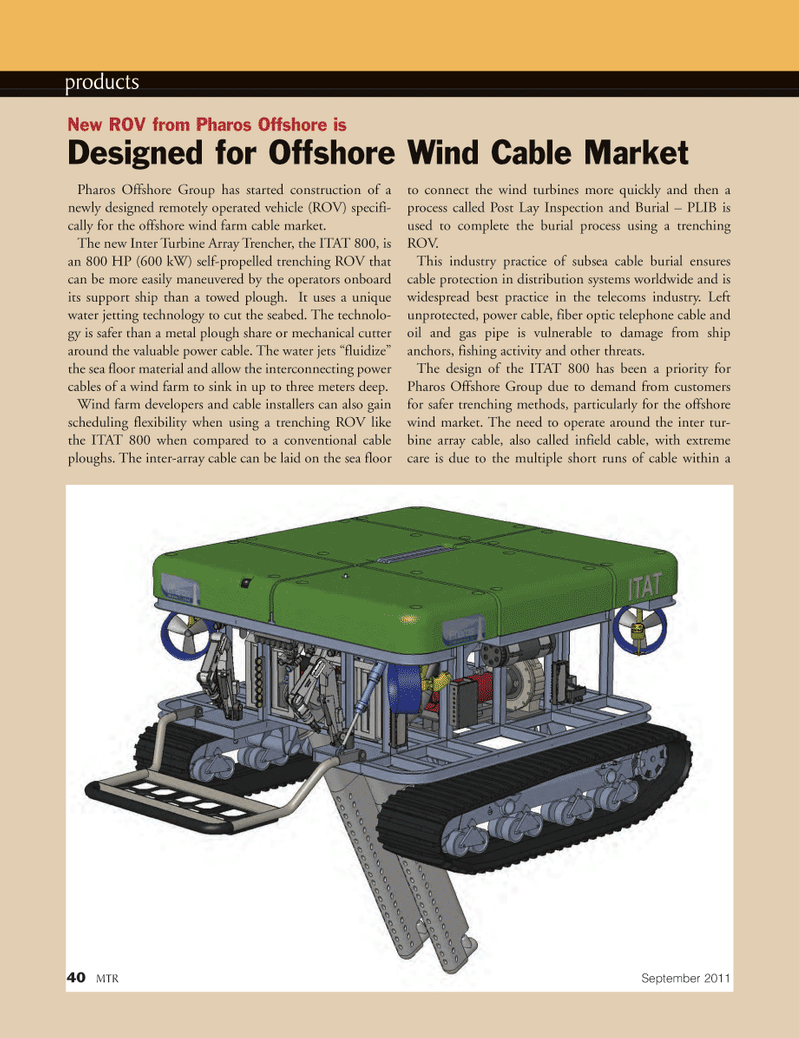
Page 40: of Marine Technology Magazine (September 2011)
Ocean Observation
Read this page in Pdf, Flash or Html5 edition of September 2011 Marine Technology Magazine
products New ROV from Pharos Offshore is Designed for Offshore Wind Cable Market 40MTRSeptember2011 Pharos Offshore Group has started construction of a newly designed remotely operated vehicle (ROV) specifi- cally for the offshore wind farm cable market. The new Inter Turbine Array Trencher, the ITAT 800, is an 800 HP (600 kW) self-propelled trenching ROV that can be more easily maneuvered by the operators onboard its support ship than a towed plough. It uses a unique water jetting technology to cut the seabed. The technolo- gy is safer than a metal plough share or mechanical cutter around the valuable power cable. The water jets ?fluidize? the sea floor material and allow the interconnecting power cables of a wind farm to sink in up to three meters deep. Wind farm developers and cable installers can also gain scheduling flexibility when using a trenching ROV like the ITAT 800 when compared to a conventional cable ploughs. The inter-array cable can be laid on the sea floor to connect the wind turbines more quickly and then a process called Post Lay Inspection and Burial ? PLIB is used to complete the burial process using a trenching ROV. This industry practice of subsea cable burial ensures cable protection in distribution systems worldwide and is widespread best practice in the telecoms industry. Left unprotected, power cable, fiber optic telephone cable and oil and gas pipe is vulnerable to damage from ship anchors, fishing activity and other threats. The design of the ITAT 800 has been a priority for Pharos Offshore Group due to demand from customers for safer trenching methods, particularly for the offshore wind market. The need to operate around the inter tur- bine array cable, also called infield cable, with extreme care is due to the multiple short runs of cable within a MTR#7 (34-48):MTR Layouts 8/30/2011 10:18 AM Page 40

 39
39

 41
41
